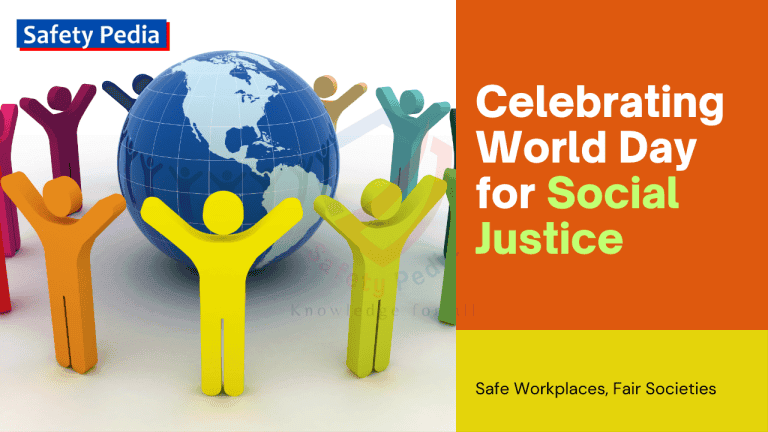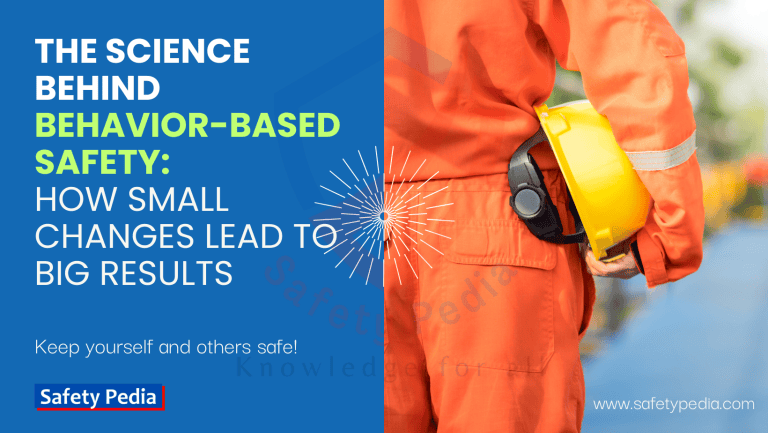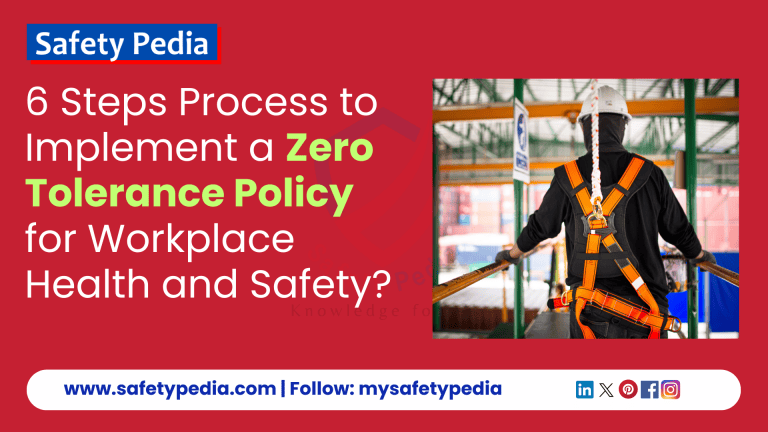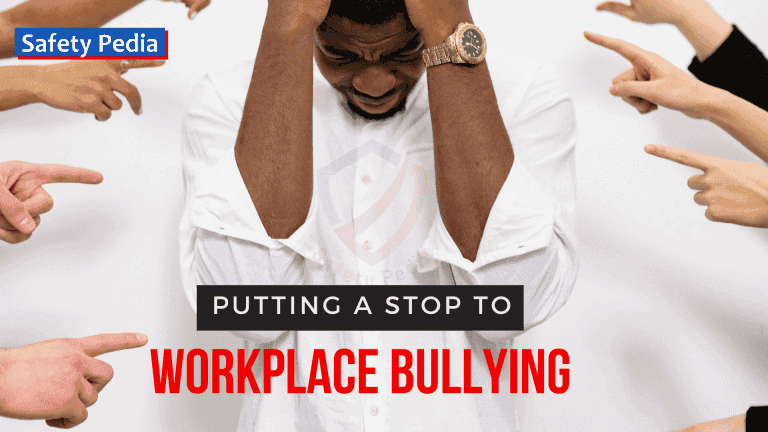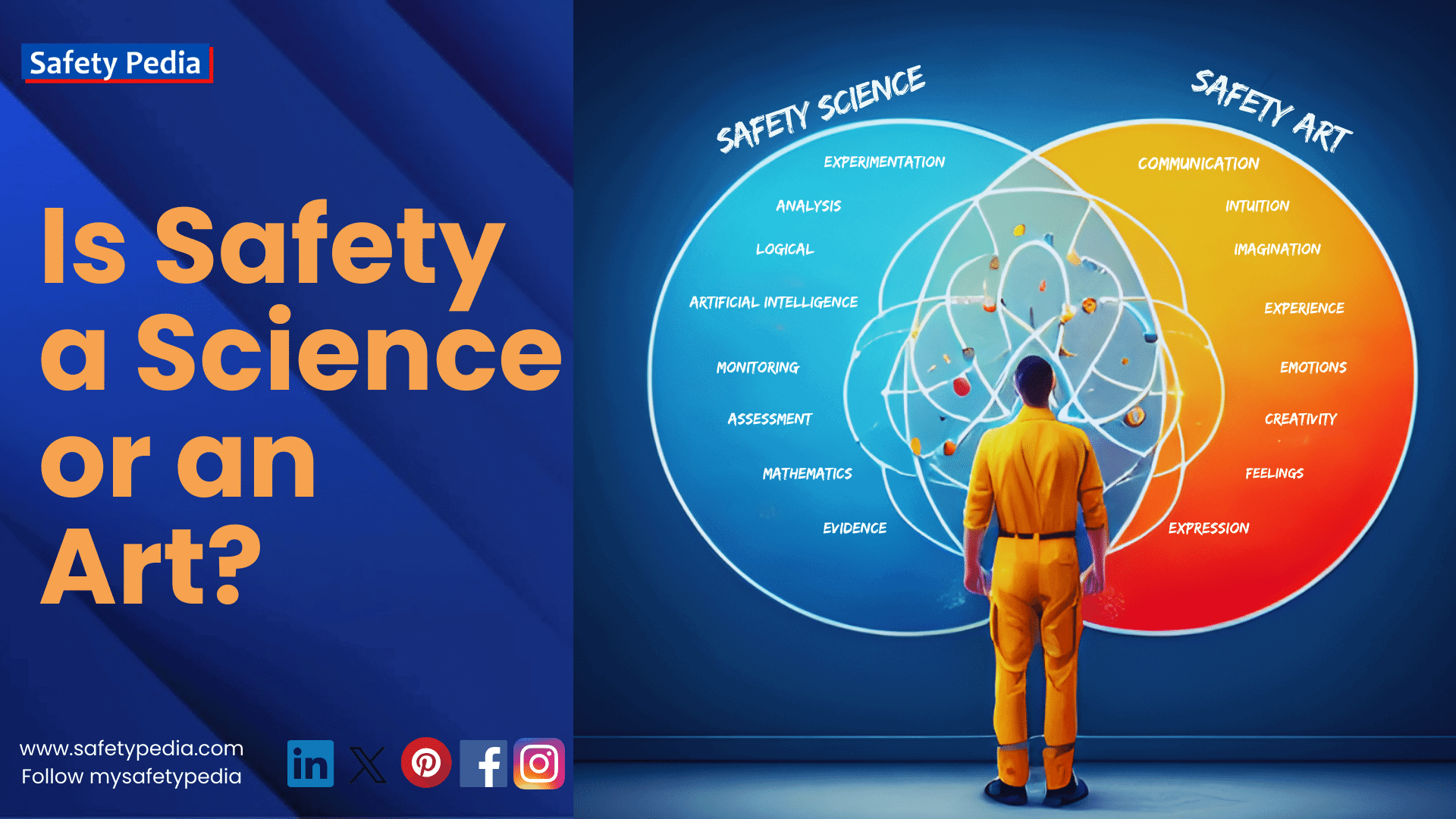
Introduction: Is safety a science or an art?
Safety is a complex and multidisciplinary field that involves the study and application of principles, methods, and tools to prevent or reduce the risk of harm to people, property, and the environment. Safety can be approached from different perspectives, such as engineering, psychology, physiology, sociology, management, law, and ethics.
Safety is a fundamental concern for any human activity, whether in the workplace, at home, or in public spaces. But how do we achieve safety? Is it a matter of applying scientific principles and methods, or is it more of an artistic endeavor that requires creativity and intuition? But is safety a science or an art?
The debate surrounding safety persists: Is it a science, a discipline rooted in empirical data and quantifiable metrics, or is it an art, an intuitive practice guided by experience and context? In this blog post, we will explore the different perspectives on safety and how they can complement each other to create a safer world.
What is Science?
Science is defined as the systematic and objective investigation of natural phenomena through observation, experimentation, and analysis. Science aims to produce reliable and verifiable knowledge that can be used to explain, predict, and control reality. Science relies on empirical evidence, logical reasoning, mathematical models, and objectivity to test hypotheses and peer review to ensure the validity and accuracy of its findings. Science also follows certain ethical standards and norms that guide its conduct and dissemination.
What is Art?
Art is the expression of human creativity and imagination, often in a visual, auditory, or literary form. Art aims to communicate ideas, emotions, and experiences to an audience. Art aims to communicate ideas, feelings, and emotions that transcend reality’s ordinary and everyday aspects. Art relies on intuition, imagination, aesthetics, and personal style to create original and unique works that reflect the artist’s vision and perspective. Art also follows certain aesthetic standards and norms that guide its evaluation and appreciation.
What is Safety?
Safety is the state of being free from danger or injury. Safety can also refer to the actions or measures taken to prevent or reduce the risk of harm or loss. Safety can be influenced by many factors, such as human behavior, environmental conditions, technological systems, organizational culture, and regulatory frameworks.
The science of safety: what it is and how it works
The science of safety is the application of scientific methods and knowledge to the field of safety. Safety science seeks to understand the causes and consequences of accidents and incidents and develop effective solutions to prevent or mitigate them. The science of safety uses a data-driven approach that relies on quantitative analysis and empirical research. Some examples of scientific disciplines that contribute to safety are engineering, psychology, statistics, medicine, and computer science.

Some arguments for safety being a science are:
- Safety is based on scientific knowledge and methods that other researchers can test, verify, and replicate.
- Safety uses scientific tools and techniques, such as risk assessment, hazard analysis, incident investigation, exposure monitoring, human factors engineering, safety management systems, and safety climate measurement, to identify, measure, and manage safety problems.
- Safety produces scientific outcomes and benefits, such as reduced injuries, fatalities, accidents, errors, losses, and costs and improved performance, productivity, quality, and reliability.
- Safety contributes to scientific progress and innovation by generating new insights, theories, and solutions for complex and dynamic safety challenges.
- It allows for systematic and rigorous evaluation of safety performance and improvement.
- It facilitates the development and implementation of standards, regulations, and best practices.
- It supports innovation and advancement in safety technology and systems.
Explanation of safety as a science
Data-driven approach
Scientific safety demands rigorous data collection and analysis. It involves tracking accidents, incidents, and near-misses to identify patterns and root causes. This data is used to formulate evidence-based safety measures.
Quantitative analysis
Safety professionals use statistical methods to assess risk levels, exposure monitoring, calculate probabilities and prioritize safety interventions. This analytical approach allows for the identification of high-risk areas.
Empirical research
Researchers conduct experiments and studies to understand safety-related phenomena better. This research informs the development of safety protocols and technologies.
Advantages of the scientific approach
Objective decision-making: Decisions are based on empirical evidence rather than subjective judgment, reducing biases and errors. It provides objective and reliable information that can be verified and replicated.
Measurable outcomes: Safety metrics allow organizations to track progress and measure the effectiveness of safety initiatives. It supports innovation and advancement in safety technology and systems.
Predictive modeling: It enables the identification and quantification of risks and hazards. Scientific safety can predict potential risks and recommend preventive measures based on historical data.
“Decisions are based on empirical evidence rather than subjective judgment, reducing biases and errors.“
The art of safety: how to keep people safe?
The art of safety is the application of human creativity and intuition to the field of safety. The art of safety seeks to understand the human factors and contextual variables affecting safety outcomes and develop adaptive and flexible solutions that suit different situations. The art of safety uses an intuitive judgment that relies on experience-based knowledge and subjectivity. Some examples of artistic disciplines that contribute to safety are design, communication, education, leadership, and ethics.
Some arguments for safety being an art are:
- Safety is influenced by human factors and social contexts that are subjective, variable, and unpredictable, requiring creativity, flexibility, and adaptability to deal effectively. It allows for customization and personalization of safety interventions and strategies.
- Safety involves human values and judgments that are not easily quantified or standardized, requiring intuition, wisdom, and ethics to balance them appropriately.
- Safety depends on human behavior and culture that is not easily changed or controlled, requiring persuasion, motivation, and leadership to influence them positively.
- Safety expresses human vision and aspirations that are not easily satisfied or achieved, requiring passion, commitment, and excellence to pursue them continuously. It enhances the engagement and satisfaction of workers and customers.
- It provides insight and understanding into human behavior and motivation.
- It accounts for the diversity and complexity of real-world scenarios.
- It promotes a culture of trust, collaboration, and learning among stakeholders.
This approach acknowledges that safety is not always a straightforward, quantitative endeavor and sometimes requires a more subjective perspective. Key aspects of safety as an art include:
Explanation of safety as an art
Intuitive judgment
Experienced safety professionals often rely on intuition to make quick decisions in rapidly changing, high-pressure situations. This intuitive sense comes from years of exposure to safety challenges.
Experience-based knowledge
The art of safety is sharpened through years of practical experience, learning from successes and failures. This experiential knowledge allows professionals to adapt to unique situations.
Subjectivity and context
Artistic safety acknowledges that context matters. What works in one situation may not work in another. It allows for flexibility in safety decision-making.
Advantages of the scientific approach
Adaptability to unique situations: In unpredictable situations, artistic safety allows for quick adaptation to changing circumstances.
Quick decision-making in uncertain environments: When time is of the essence, an experienced practitioner’s intuitive judgment can be invaluable.
Emphasis on human factors: The art of safety recognizes the critical role of human behavior and psychology in safety outcomes.
The intersection of science and art in safety
While the debate often presents safety as a binary choice between science and art, the reality is more complex. The most effective safety strategies often incorporate elements of both. Recognizing that safety benefits from both scientific and artistic elements is crucial. The two approaches are not mutually exclusive; they can complement each other to enhance safety outcomes.
Consider the aviation industry, where rigorous scientific analysis informs safety protocols, but pilots’ experience and intuitive skills are equally vital during in-flight, especially emergencies. In construction, data-driven risk assessments guide safety measures, but on-site workers rely on their artistry of situational awareness to navigate the constantly changing environment safely. Healthcare, too, marries scientific evidence-based practices with the art of patient care, where healthcare providers make complex decisions based on data and personal judgment.
Recognizing the complementary nature
While science and art may seem like opposite poles in the safety spectrum, they are not mutually exclusive or incompatible. In fact, they can complement each other and create a synergistic effect that enhances safety performance. Science provides the foundation and framework for safety, while art provides the finesse and flair. Science offers the facts and figures, while art offers the stories and emotions. Science solves problems, while art creates opportunities.
Hybrid approaches to safety
One way to integrate science and art in safety is to adopt hybrid approaches that combine elements from both perspectives. For example:
- Risk assessment with human factors considerations: This approach involves assessing the likelihood and severity of potential hazards using quantitative methods (such as probability theory) while also taking into account the qualitative aspects of human behavior (such as perception, cognition, and emotion) that may influence risk perception and decision making.
- Incorporating data-driven decision-making with intuition: This approach involves using data analysis tools (such as machine learning) to generate insights and recommendations based on historical data and trends while also using intuition (such as gut feeling) to question the results based on personal experience or context.
Factors influencing the balance between safety as a science and safety as an art
The balance between safety as a science and safety as an art is not static and is influenced by several factors:
Nature of the Domain: High-risk industries like nuclear energy may lean more towards the scientific approach, whereas creative industries may rely more on the artistic aspect. The balance between science and art in safety may vary depending on the nature of the domain or industry. For example:
- In domains that are highly complex, dynamic, uncertain, or novel (such as aerospace or biotechnology), a higher degree of science may be required to cope with the technical challenges and unknowns.
- A higher degree of art may be required to cope with human factors and values in highly social, emotional, cultural, or ethical (such as entertainment or education).
Regulatory Environment: Stringent regulations may necessitate a more scientific approach to meet compliance requirements. The balance between science and art in safety may also vary depending on the regulatory environment or framework. For example:
- In environments that are highly regulated, standardized, or prescriptive (such as nuclear or aviation), a higher degree of science may be required to comply with the rules and requirements.
- In environments that are less regulated, flexible, or adaptive (such as hospitality or entertainment), a higher degree of art may be required to respond to customer needs and preferences.
Cultural and Organizational Factors: The culture within an organization can influence whether safety is seen as a science or an art. The balance between science and art in safety may also vary depending on the cultural and organizational factors or context. For example:
- A higher degree of science may be preferred or valued in cultures or organizations that are more rational, analytical, or objective (such as NASA).
- A higher degree of art may be preferred or valued in cultures or organizations that are more intuitive, creative, or subjective (such as Google).
Technological Advancements: Technology advancements, such as AI and predictive analytics, are shifting safety toward a more data-driven approach. The balance between science and art in safety may also vary depending on technological advancements or innovations. For example:
- As technology becomes more advanced, sophisticated, or intelligent (such as artificial intelligence or robotics), a higher degree of science may be needed to understand and manage the technology and its implications.
- As technology becomes more humanized, personalized, or interactive (such as virtual reality or social media), more art may be needed to engage and communicate with the technology and its users.
“Safety is not a matter of choosing between science and art, but of finding the right balance between them. It requires both data-driven analysis and intuitive judgment, as well as ethical deliberation and practical adaptation.”
The history of safety: how it has evolved?
Safety is not a static concept or a fixed state but a dynamic process and a continuous journey. Safety has evolved over time in response to human activity’s changing needs and challenges. Some milestones in the history of safety are:
- The Industrial Revolution: The emergence of factories, machines, and mass production led to new hazards and risks for workers and consumers. This prompted the development of labor laws, safety regulations, and inspection agencies to protect workers’ rights and welfare.
- The World Wars: The outbreak of global conflicts and warfare led to new threats and dangers for soldiers and civilians. This prompted the development of military standards, safety engineering, and human factors research to enhance the performance and survivability of weapons and equipment.
- The Space Age: Exploring outer space and other planets led to new frontiers and opportunities for science and discovery. This prompted the development of aerospace standards, safety management systems, and risk analysis methods to ensure the safety and reliability of spacecraft and missions.
- The Information Age: The proliferation of information technology and digital networks led to new possibilities and challenges for communication and collaboration. This prompted the development of cyber security, data protection, and privacy policies to safeguard the security and integrity of information systems and data.
The future of safety: where it is headed?
Safety is not an end goal or a final destination but an ongoing challenge and an endless quest. Safety will continue to evolve in the future as new technologies, trends, and issues emerge. Some directions for the future of safety are:
- The Internet of Things: The interconnection of physical devices, vehicles, buildings, and other objects through the Internet will create new opportunities for data collection, analysis, and optimization. This will also create new vulnerabilities for cyber attacks, hacking, or sabotage that may compromise the safety and functionality of these devices.
- AI and robotics: AI and robotics are transforming the safety field in various ways. They can help prevent accidents, reduce human errors, enhance situational awareness, and improve emergency response. For example, AI can analyze data from sensors, cameras, and other sources to detect hazards and alert workers or authorities. Robotics can perform tasks that are too dangerous, tedious, or inaccessible for humans, such as inspecting pipelines, mines, or nuclear plants. AI and robotics can also assist in training, simulation, and decision-making for safety professionals. However, AI and robotics also pose new challenges and risks for safety, such as ethical, legal, social, and technical issues. Therefore, ensuring that AI and robotics are designed, developed, and deployed with safety in mind is important.
- The Fourth Industrial Revolution: The convergence of physical, digital, and biological systems through technologies such as artificial intelligence, biotechnology, nanotechnology, or 3D printing will create new possibilities for innovation, customization, and enhancement. This will also create new ethical dilemmas for human dignity, identity, or autonomy that may affect the safety and well-being of people.
- The Climate Crisis: The increase in global temperature due to greenhouse gas emissions will create new impacts on environmental sustainability, biodiversity, or natural disasters. This will also create new responsibilities for social justice, equity, or resilience that may affect the safety and security of communities.
Rise in Demand for Communication with Technology: The Future of Safety
In the evolving landscape of safety, there is a notable and growing demand for effective communication with technology, including robots and artificial intelligence (AI) systems. In the future of safety, the ability to communicate effectively with technology, particularly robots and AI systems, will be a core competency for safety professionals. This demand arises from the increasing integration of technology into safety-critical domains and the need to ensure that these technologies are used safely and ethically. As such, professionals in the safety field must be equipped with technical knowledge and the ability to interface with and control advanced technological systems to enhance safety outcomes.
“State of the art science in safety is the beacon that guides us towards a future where prevention, innovation, and precision safeguard lives and well-being.”
Abdullah Malik
The challenges of safety: what we need to overcome?
Safety is a complex and dynamic phenomenon requiring scientific and artistic approaches. There are various barriers to achieving good standards of health and safety. However, neither approach is perfect, and both have their own challenges and limitations. It is important to know, why it is important to manage health and safety. Here, I will discuss some of the main challenges of each approach and the ethical considerations involved in making safety decisions. I will also suggest ways to balance the two approaches in practice to achieve a more holistic and effective safety culture.
Both the scientific and artistic approaches to safety have their limitations. Overreliance on quantitative data may lead to tunnel vision, missing critical context, and human factors. Conversely, relying solely on intuition and experience may overlook emerging risks identified through data analysis. Ethical considerations also come into play when deciding on the appropriate balance between science and art in safety.
Limitations of the scientific approach
One of the main challenges of safety is the limitation of the scientific approach. The scientific approach to safety relies on quantitative data, such as statistics, measurements, indicators, and models. This approach can provide objective and reliable information about the current state of safety, the potential hazards, and the effectiveness of interventions. However, the scientific approach also has its limitations. For example:
- Many safety challenges are multifaceted and influenced by numerous variables, making them difficult to capture and address using purely scientific methods.
- Data may not capture the full picture of safety, especially regarding human factors such as culture, behavior, motivation, and perception.
- Data may be incomplete, inaccurate, or outdated, leading to false conclusions or misleading recommendations.
- Data may be influenced by biases, such as confirmation bias, availability bias, or survivorship bias, which affect how data is collected, analyzed, and interpreted.
- Scientific approaches often assume that individuals will act rationally, which may not always be true in real-life safety scenarios. Human factors, emotions, and unexpected behaviors can all challenge the predictive power of scientific models.
- Data may not account for uncertainty, complexity, or variability in safety situations, limiting the applicability or generalizability of data-driven solutions.
Risks of overreliance on intuition
Another challenge to safety is the risk of overreliance on intuition. The artistic approach to safety relies on intuition and experience, such as gut feelings, heuristics, rules of thumb, and best practices. This approach can provide flexible and creative solutions to safety problems, especially when data is scarce or ambiguous. However, intuition can also be misleading, inaccurate, or irrational. Emotions, heuristics, stereotypes, and cognitive biases can affect intuition, impairing our judgment and decision-making. Furthermore, intuition can be difficult to communicate, justify, or verify by others. However, the artistic approach also has its risks. For example:
- Intuition may be inaccurate or unreliable, especially when it is based on personal preferences, emotions, or stereotypes. This subjectivity may lead to inconsistent safety judgments, with different individuals making different decisions in similar situations.
- Intuition may be inconsistent or contradictory, especially when influenced by external factors, such as stress, fatigue, or peer pressure.
- Relying solely on intuition may lead to inadequate risk assessment, especially in complex and rapidly changing environments. Overconfidence in one’s intuition can result in overlooking critical safety factors.
- Intuition may resist change or improvement, especially when it is rooted in habits, traditions, or norms.
- When safety decisions are primarily based on intuition, holding individuals or organizations accountable for safety failures or lapses in judgment can be challenging.
- Intuition may not align with ethical principles or values, especially when it involves trade-offs between safety and other goals.
Ethical considerations in safety decisions
A third challenge of safety is the ethical consideration in safety decisions. Safety is not only a technical or rational issue but also a moral and social one. Safety decisions may significantly impact various stakeholders’ well-being, rights, and interests, such as individuals, groups, organizations, or society. Therefore, safety decisions should be guided by ethical principles and values that respect all parties’ dignity, autonomy, and diversity. However, ethical considerations may also pose dilemmas, conflicts, or trade-offs that require careful deliberation and negotiation.
One of the most important aspects of any technology is its impact on its users and society’s safety and well-being. This is especially true for artificial intelligence, which can potentially transform many domains and industries. However, artificial intelligence poses significant challenges and risks, such as ethical dilemmas, bias, privacy, security, accountability, and human dignity. Therefore, it is essential to consider the emotional and ethical concerns that may arise from developing and deploying artificial intelligence systems and ensure that they align with human values and interests.
Safety decisions are not only technical or practical but also ethical. Ethical considerations involve questions such as:
- Who is responsible for ensuring safety?
- Who benefits from safety interventions?
- Who bears the costs or risks of safety interventions?
- How are safety priorities determined?
- How are safety trade-offs resolved?
- How are safety outcomes evaluated?
Ethical considerations require both scientific and artistic approaches to be balanced and integrated. For example:
- Ethical dilemmas often arise in safety decisions, particularly when there is a need to make trade-offs between competing interests. For example, balancing public safety with individual liberties or economic considerations can be ethically challenging.
- Ethical safety decisions require transparency and inclusivity in the decision-making process. Ensuring that diverse perspectives are considered and that decisions are communicated openly can be difficult, especially in organizations with hierarchical structures.
- Ethical considerations extend to the long-term consequences of safety decisions. Decisions made today can have far-reaching impacts on future generations, which necessitates careful ethical deliberation
- Scientific data can inform ethical decisions by providing evidence and facts about safety issues and impacts.
- Artistic intuition can inform ethical decisions by providing insights and values about safety goals and preferences.
- Ethical decisions can influence scientific data by setting standards and criteria for data collection and analysis.
- Ethical decisions can influence artistic intuition by shaping norms and expectations for behavior and performance.
Balancing the two approaches in practice
The final safety challenge is balancing the two approaches in practice. As we have seen, science and intuition have strengths and weaknesses in ensuring safety. Therefore, we need to find a way to combine them in a complementary and synergistic manner. This means that we need to use science to inform and enhance our intuition and use intuition as a source to inspire and challenge our science. Moreover, we need to apply ethical standards and values to both approaches to ensure that our safety decisions are effective but also fair and responsible.
Balancing the scientific and artistic approaches to safety is not easy. It requires a combination of skills, knowledge, attitudes, and tools. Some of the ways to achieve this balance are:
- Ethical considerations extend to the long-term consequences of safety decisions. Decisions made today can have far-reaching impacts on future generations, which necessitates careful ethical deliberation
- As technologies and industries evolve, the balance between scientific and intuitive approaches may need to shift. Adapting to these changes and continuously reassessing safety strategies is essential.
- Ensuring that professionals in various fields are equipped with scientific and intuitive safety skills requires comprehensive training and education. Developing interdisciplinary skills and promoting a safety culture that values both approaches is an ongoing challenge.
- Developing a safety culture that fosters learning, collaboration, diversity, and innovation.
- Encouraging a safety mindset that embraces curiosity, openness, critical thinking, and reflection.
- Applying a safety method that integrates data and intuition in a systematic and transparent way.
- Using a safety tool that supports data collection, analysis, intuition generation, and evaluation.
“The intuitive approach also has some risks. For example, it may be influenced by cognitive biases, such as confirmation bias, availability bias, or hindsight bias, that may impair our perception and reasoning about safety. Social factors, such as peer pressure, groupthink, or authority bias, may also affect it, compromising our independence and critical thinking about safety. Moreover, it may not be consistent, transparent, or accountable for the outcomes of safety decisions.“
Safety excellence: Where art meets science.
Safety excellence can be achieved where art meets science, where creativity and rigor combine to create a culture of safety that is both inspiring and effective. This quote highlights the importance of both the creative and the analytical in achieving safety excellence. On the one hand, we need to be able to imagine new and innovative ways to prevent accidents and injuries. On the other hand, we need to be able to assess and manage risks rigorously.
When we bring these two together, we create an effective and inspiring safety culture. It is a culture where people are encouraged to think outside the box and develop new ideas while being held accountable for following procedures and taking risks seriously.
Here are some examples of how art and science can come together to achieve safety excellence:
- Using storytelling to raise awareness of safety hazards. Safety stories can be a powerful way to engage people and help them understand the real-world consequences of accidents and injuries.
- Using data analytics to identify and mitigate risks. By collecting and analyzing data on safety incidents, we can identify patterns and trends that can help us to develop targeted interventions.
- Using gamification to make safety training more engaging and effective. Gamification can use elements of games and game design to make learning more fun and motivating.
- Using technology to create safer work environments. For example, wearable devices can be used to monitor workers’ exposure to hazards and provide real-time alerts.
By bringing together art and science, we can create an effective and inspiring safety culture. This is a culture where people are empowered to take ownership of their own safety and their colleagues’ safety and where everyone works together to create a safer and healthier workplace.
Safety Professionals: The Fusion of Science and Art
Safety is not only a technical discipline but also a creative one. A safety professional must be equipped with both the science and the art of safety to achieve excellence in safety. Safety science involves knowledge of standards, regulations, methods, and tools that can help prevent or mitigate hazards. The art of safety involves communication, collaboration, leadership, and innovation skills that can help foster a positive safety culture and influence behaviors. A safety professional can design and implement effective solutions that protect people, property, and the environment by combining science and the art of safety.
In essence, safety professionals must bridge the scientific foundations of safety and the art of applying that knowledge in real-world, dynamic situations. Excelling in safety requires the ability to conduct quantitative risk assessments and the capacity to navigate the complexities of human behavior, ethics, and evolving technologies.
Ultimately, by implementing both the science and the art of safety, safety professionals can enhance safety outcomes, prevent accidents, and contribute to a safer and more secure world. The fusion of these two approaches empowers safety professionals to make well-informed decisions while demonstrating adaptability, empathy, and a commitment to protecting human well-being.
“Safety professionals are the artists of protection, using the science of data and the canvas of experience to create a masterpiece of well-being“
Conclusion: the case for safety
In conclusion, the debate over whether safety is a science or an art cannot be definitively settled. Instead, the discussion should focus on recognizing the value of both approaches and integrating them to achieve the best outcomes. Safety is a challenge that requires both science and art. Both approaches have their strengths and weaknesses. The key is to balance them to maximize their benefits and minimize their drawbacks. By doing so, we can overcome safety challenges and create a safer world for everyone.
Safety can be seen as both a science and an art, depending on the perspective and purpose of the analysis. Safety is a science that uses scientific knowledge and methods to understand and improve safety reality. Safety is an art because it uses artistic skills and imagination to create and inspire a safety culture. Safety is a science-art hybrid that combines the best of both worlds to achieve the ultimate goal of preventing harm and enhancing well-being. Striking a balance between the science and art of safety is crucial in a world that presents evolving challenges and uncertainties.
“Safety professionals must manage this delicate equilibrium between science or an art to ensure the safety and well-being of individuals and communities in an ever-changing environment.“
References:
https://www.servsafe.com/Landing-Pages/Food-Safety-White-Paper
https://www.waste360.com/mag/waste_art_science_safety
Your one click can make a difference
Keep sharing and promoting health and safety awareness!
Related posts:
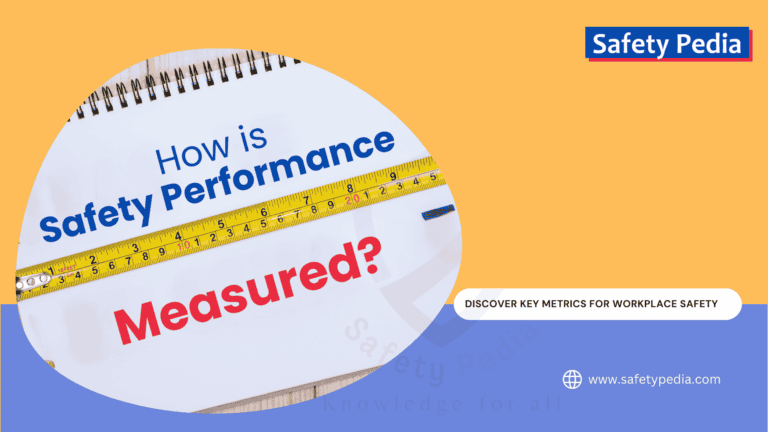
How to Measure Safety Performance?
Struggling to measure your workplace safety performance? Learn how to measure safety performance with key metrics to improve workplace safety. Discover essential indicators for risk assessment, compliance, and accident prevention.
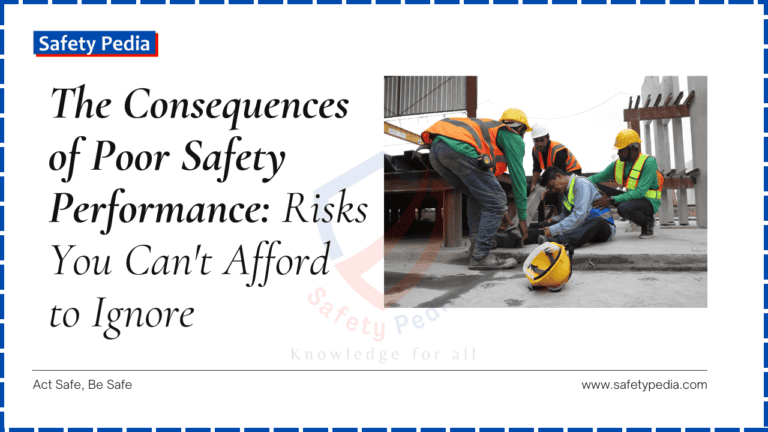
The Consequences of Poor Safety Performance: Risks You Can’t Afford to Ignore
Discover the potential consequences of poor safety performance in the workplace and how they can negatively impact both employees and the company as a whole.
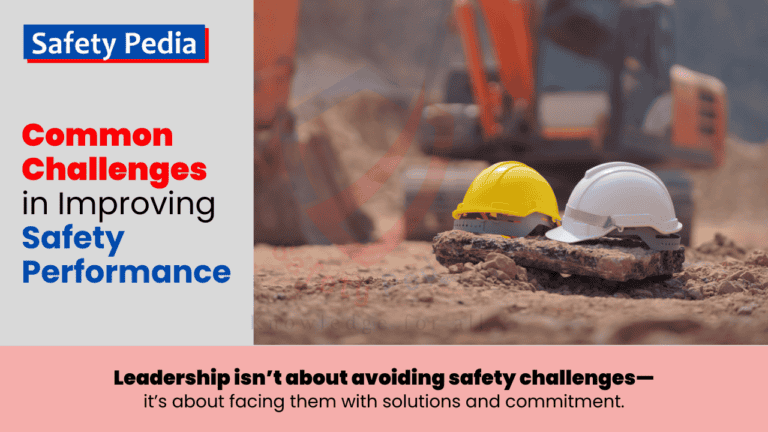
18 Common Challenges in Improving Safety Performance at Work
Discover 18 common challenges in improving safety performance at work. Learn how to overcome these obstacles for a safer workplace.
Join Our Safety Community!
Stay informed with the latest tips and insights on occupational health, safety, and the environment.
